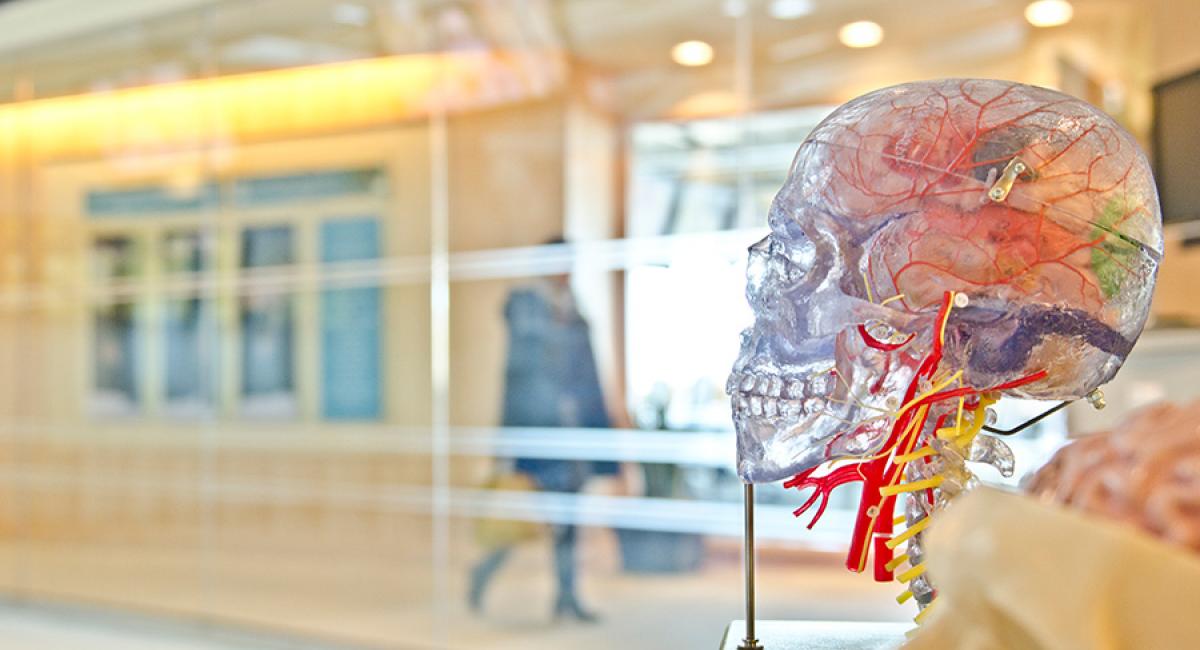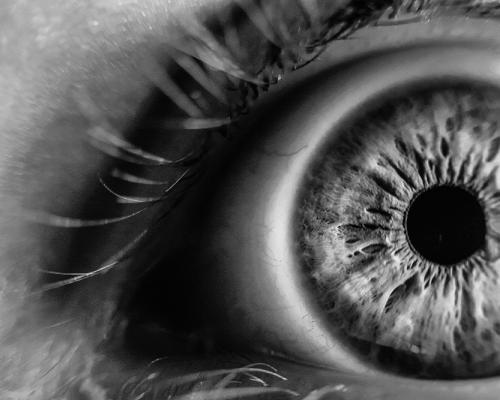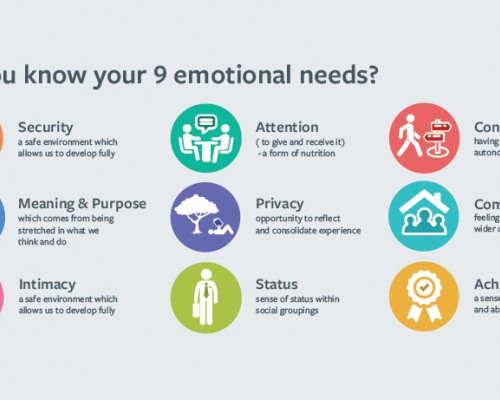Human givens: the evidence so far
Bill Andrews describes the practice-based evidence that has emerged from studies of the human givens approach to date and explains why the future looks positive.
HOW cost-effective is counselling? What proportion of people referred to counselling services for mental health problems get well enough to continue a normal life afterwards? This is the primary consideration for mental health commissioners who pay out for counselling services, yet it is very difficult for them to arrive at a realistic answer.
Patients may be referred by their GPs for counselling yet not actually turn up for the assessment session, which could be set for some months later. For those patients who do attend the assessment, there may be months to wait between assessment and first appointment, so, during this period too, many may fall by the wayside. Whatever proportion make it through to starting treatment, a number will attend just one session, with no one the wiser as to whether the individuals ‘recovered’ or just gave up. All this results in a waste of the counsellors’ time – and, of course, unnecessary cost.
It is a minority who see therapy through to an agreed planned ending. If they have been atten ding services that measure outcomes (which most statutory services now do), they will, by the time they finish, have completed two standard measurement forms, showing the improvement (or deterioration) in their state of mental health between the first session and the last. The forms will also denote whether a patient’s current state of mental health is equivalent to that of someone in the ‘non-clinical’ population – ie they are capable of normal day-to-day functioning. As only a small proportion of patients may arrive at this end point after referral, it is extremely difficult for commissioners to judge where they will obtain best value for money. Data gathered through the Human Givens Institute Practice Research Network (HGIPRN) reveal a very dif ferent and far more accurate story.
The Human Givens Institute is running an ongoing national study, which is gathering real-life, practice-based information about clinical outcomes in a variety of settings. Research carried out at a GP practice in Luton (see below) served as a pilot project. Over its 12-month period every single patient who was referred was seen and assessed and, at every session during that period, the participating human givens thera pists had their clients fill in a standard form about their current state of psychological health. Ninety per cent of the patients had at least two valid outcome measures, making it possible to demonstrate whether improvement had occur red from the first session to the subsequent session. Of the patients who started therapy and whose outcome-measure scores at the outset of treatment were below the level deemed to signify mental health, 69 per cent were improved and/or fully recovered, by the end of treatment. Forty-nine per cent were in the ‘fully recovered’ category. Twenty per cent were in the ‘improved’ category, meaning significant gains were made in treatment but the patients were still below the level signifying mental health.
Results on the Luton project
MANY aspects of the human givens approach seem well suited to use in NHS general practice. I was very keen, therefore, when offered the chance to run a 12-month project in my practice in Luton, Bedfordshire, to trial its effectiveness. (Ours is a research practice which has been funded by the Department of Health for the last 10 years.) During the project period, three trained human givens therapists were based in our practice, each seeing four patients a week for a one-hour session. Any patient who would normally have been referred by our doctors and nurses to counselling provided by Luton Primary Care Trust (PCT) was referred to one of the human givens therapists instead. (The PCT’s talking therapies programme covers a variety of approaches but not, as yet, human givens.)
The patients we referred were experiencing the full range of problems encountered in primary care, such as depression, anxiety, insomnia and panic attacks or physical symptoms with no organic cause, often secondary to life events such as bereavement, redundancy or relationship problems. In all, 112 patients received therapy during the project. For over three quarters, problems had persisted for more than six months and 58 per cent were taking drugs for anxiety and/or depression. Some had already had other counselling, through the PCT scheme, or had been seen by the mental health team but had not felt sufficiently helped. The project offered a great opportunity to provide them with something new, when traditional approaches had not worked for them.
So that their progress could be tracked, at each visit patients were required to complete CORE questionnaires – the full 34-question version at first and last session and a 10-question version at each session in between. This established scientific measure, which gives scores for wellbeing, problems/symptoms, life functioning and risk, is widely used within the NHS at the beginning and end of therapy. However, the introduction of the 10-question version at each session was new to this trial and enabled therapists to use the results to inform their practice. Results were all entered on the CORE-NET national database.
Overall, 69 per cent of clients were defined as recovered or reliably improved according to their CORE scores, in an average of four one-hour sessions. This compares extremely favourably with national benchmarks because the latter do not include people who drop out of treatment whereas, in our research, there was complete data capture.
The therapy was very popular with the patients, with many finding relief from longstanding problems. Particularly striking to us was the fact that, whereas previously patients tended to come back after their six allotted counselling sessions and ask who they should see next, after human givens therapy they felt equipped with what they needed to do in order to face future difficulties without sinking into depression or becoming victim to extreme anxiety.
This is the first time that human givens therapy has been tested in a primary care setting, and doctors and nurses at our practice were uniformly positive in their evaluations of the service. Indeed, as a result, some are undergoing the human givens training themselves. We are hoping that funders within the NHS will realise that providing just four hours of human givens therapy to patients with mental health problems can provide immediate benefits – and also probably prevent them from developing more severe and enduring problems.
What the HGIPRN is demonstrating is practice-based evidence[1] – the regular systematic gathering of good quality data from routine practice, which makes it possible to investigate what works. If we had no other argument than this one, mental health service commissioners should surely see that they can get a good return on their money if people see human givens therapists. However, it has been evidence-based practice that has carried most weight with the National Institute for Health and Clinical Excellence (NICE), the body responsible for providing national guidance on promoting good health and preventing and treating illness. It recommends best treatments for a whole range of conditions on the grounds of ‘evidence’, most notably in the form of randomised controlled trials (RCTs).
Unfortunately, while evidence-based practice is increasingly becoming mandatory in many organ isations, the evidence of its efficacy is lacking in real-world terms. In the field of psychological health, the evidence for how well evidence-based treatments generalise to wider populations of ser vice users and practitioners is sparse – and that includes evidence indicating that it isn’t especially good.[2] It also does not take into account other vari ables, such as co-morbidity, differing patient popu lations and differential effectiveness of therapists.
Practice-based evidence, despite showing what works in the actual workplace, is also not without its critics. Steve Pilling, co-director of the National Collaborating Centre for Mental Health, one of seven collaborating centres funded by NICE to produce clinical guidelines, has not to date been impressed with practice-based evidence because most, he says, is not high quality. However, the evidence gathered through HGIPRN is high quality. We track clients throughout their therapy (ie at every single session) and we include their data even if they drop out of therapy. In our ongoing main study, where we gather data using CORE Net, a cutting-edge, internet-based tracking system from CORE IMS (Clinical Outcomes in Routine Evaluation – Information Management Systems), the recovery and improvement figure is 71 per cent. The data are based on results from over 70 therapists. Up-to-date data on over 1,300 closed cases show that, where more than one valid measure is available, 51 per cent of patients are demonstrating recovery.
At the outset of this project I hoped to be able to make valid comparisons between HGIPRN data and that held within the CORE National Research Database. However, the sessional data being gathered through the HGIPRN do not allow fair comparison with the more traditional national research data, as these measure a client’s state of mental health only at the start and end of therapy. This means little is known about the journey through treatment, and missing data on those who choose to terminate early compromise the quality of the data. This is one of the most common criticisms of practice-based evidence data based on measurement only at the beginning and end of therapy. In fact, to date, it is proving diff icult to find any other services in the UK using a similar ‘every session’ methodology, where we can make a fair comparison with HGIPRN outcomes.
All this is changing, however, to our advantage. Findings from the first 12 months’ data collection from the government’s Improving Access to Psychological Therapies (IAPT) initiative, gath ered at its pilot site in Doncaster, have now been published.[3] This prospective cohort study rep resents a good example of the sort of robust ‘real-world’ effectiveness evaluation that we have been advocating in HGIPRN.
The IAPT programme has one principal aim: to support primary care trusts in implementing NICE guidelines for people suffering from dep ression and anxiety disorders. Most of the therapy offered under the umbrella of this programme is cognitive-behavioural therapy (CBT), although not exclusively. This major government initiative is in the process of evaluation across the UK, where use of ‘every session’ outcome measures is being employed to establish if, indeed, the evidence-based treatments recommended by NICE are being effectively delivered and resulting in the expected reduction of psychological distress. Our results compare very favourably with the first findings. By the time this article appears in print, the first independent review of the Doncaster data, along with that from the other IAPT pilot site, Newham, should also have been published.[4]
A new benchmark
It has been mandatory in this initiative that outcome measures are collected at every session. The therapy effectiveness figures collected from IAPT will, therefore, set a benchmark for what can be achieved within primary care. (It may well be that we have matched it already.) Amongst the outcome measures used within IAPT are the PHQ-9 (for depressive symptoms) and the GAD-7 (for anxiety) – the numbers referring to the num ber of questions in each. The CORE outcome measure has a very high correlation with both of these measures. However, it has recently become possible for organisations and services collecting data through HGIPRN (see www.hgiprn.org) to choose to use these measures instead of CORE, which will bring them even more closely into line with IAPT service practice and ease extrapolation from overall results.
Academics researching practice-based evidence are privately becoming convinced that, with the advent of IAPT and its evidence on outcome data collection, there will be an increasing shift away from reliance on randomised controlled trials (RCTs) as the gold standard for psychotherapy treat ments – and a move towards high-quality practice-based evidence instead.[5] HGIPRN will quite clearly be at the forefront of this and it makes sense for all human givens therapists who are not yet measuring data to start joining in. Not only is outcome-informed practice mandatory for IAPT services, it is also a National Occupational Standard and looks set to become a govern ment requirement.
As we know, the therapeutic approach that has amassed most of the ‘right’ kind of evidence (RCTs), thus leading to its recommendation by NICE for most psychological conditions, is CBT. Yet one of its leading proponents, Paul Salkovskis, pointed out, several years ago, the dangers of going too far down the RCT route as a means of judging effec tiveness. In a paper in Behavioural and Cognitive Psychotherapy, which he edited at that time, he wrote, “The risk inherent in the current practice of evidence-based mental health is that the field will degenerate into a parody, a kind of one-dimensional science, and there are signs that this has already occurred to some degree. … CBT was an evidence-based approach to mental health problems long before the term ‘evidence-based’ was coined, but it was and is much more than the current meaning of the term. CBT is best de scribed as a set of empirically grounded clinical interventions, carried out by clinicians who seek to operate as scientist-practitioners.”[6]
We are making the case that the human givens approach also comprises “a set of empirically grounded clinical interventions”. Although there have been no RCTs of it as a therapeutic app roach, most of its individual elements have been validated through clinical trials. Indeed, almost all the research evidence cited in the newly up dated NICE guidelines for depression concern techniques that are routinely used in human givens therapy.[7] Clinical psychologist and human givens therapist Shona Adams and her psychology assistant Becci Roberts are currently mapping elements of human givens (eg cognitive-beha vioural approaches, guided imagery, reframing, etc) to the evidence-based findings already recognised by NICE for each of these interventions. This should establish the empirical basis of the human givens techniques, while acknowledging the difference in the underlying organising ideas.
In an earlier paper, Salkovskis described what he called the hourglass model of psychological therapies research (see below).[8] This shows how clinical observation, exploratory research, theory development, other forms of re search, uncontrolled trials and case studies must all be execut ed before it is appropriate to carry out an RCT to consolidate findings gleaned up to that point. As can be seen from the illus tration, much must precede the RCT and much must follow it, when a method that is found to be effective is put to further test in real-world settings. By show ing that the human givens approach uses empirically validated methods, we should be able to flow through the RCT area of the hourglass, straight on to effectiveness. The question then becomes, “Does the package that makes up the human givens approach work in real-life settings?” The sooner every therapist using this approach undertakes to gather outcome evidence, the sooner we will be able to demonstrate a resounding “Yes!”
This article first appeared in "Human Givens Journal" Volume 16 - No. 4: 2009
 Spread the word – each issue of the Journal is jam-packed with thought-provoking articles, interviews, case histories, news, research findings, book reviews and more. The journal takes no advertising at all, in order to maintain its editorial independence.
Spread the word – each issue of the Journal is jam-packed with thought-provoking articles, interviews, case histories, news, research findings, book reviews and more. The journal takes no advertising at all, in order to maintain its editorial independence.
To survive, however, it needs new readers and subscribers – if you find the articles, case histories and interviews on this website helpful, and would like to support the human givens approach – please take out a subscription or buy a back issue today.
References
- Griffin, J (1997). The Origin of Dreams. The Therapist Ltd, West Sussex
- Griffin, J and Tyrrell, I (2004). Dreaming Reality: how dreaming keeps us sane or drives us mad. HG Publishing, East Sussex.
- Griffin, J and Tyrrell, I (2003) Human Givens: The new approach to emotional health and clear thinking. (Afterword.) HG Publishing, East Sussex
- Hobson, J, Aand McCarley, RW (1977) The brain as a dream-state generator: an activation-synthesis hypothesis of dream process. American Journal of Psychiatry , 134, 1335-1368.
- Solms, M (2000) Dreaming and REM sleep are controlled by different brain mechanisms. Behavioural and Brain Sciences, 23, 843-850
- Ratey, J (2001) A User's Guide to the Brain. Little, Brown and Company, New York, London
- Freeman and Watts, quoted in Whitaker, R (2002) Mad in America.Perseus Publishing.
- This programme, presented by Melvin Bragg, was broadcast on 4 March 2004
- Dement, W et al (1967) Studies on the effects of REM deprivation in humans and in animals, In S S Kety, E V Ewarts and HL (eds) Sleep and Altered States of Consciousness. Proceedings of the Association for Research in Nervous and Mental Disease, 45, 456-468
Latest Tweets:
Tweets by humangivensLatest News:
HG practitioner participates in global congress
HG practitioner Felicity Jaffrey, who lives and works in Egypt, received the extraordinary honour of being invited to speak at Egypt’s hugely prestigious Global Congress on Population, Health and Human Development (PHDC24) in Cairo in October.
SCoPEd - latest update
The six SCoPEd partners have published their latest update on the important work currently underway with regards to the SCoPEd framework implementation, governance and impact assessment.
Date posted: 14/02/2024












